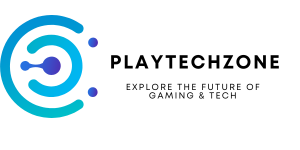By: Peter, Content Writer & Tech Expert at Playtechzone.com
As an avid follower of the ever-evolving landscape of PC gaming, you’ve likely encountered the term “Resizable BAR” (ReBAR). This technology, alongside AMD’s equivalent “Smart Access Memory” (SAM), has become a staple feature in modern gaming PCs, often touted as a must-have for unlocking performance boosts. While ReBAR can indeed lead to noticeable improvements in specific scenarios, the reality is far more nuanced than simply flipping a switch and reaping the benefits.
This article delves into the intricacies of ReBAR, exploring its inner workings, its potential impact on your gaming experience, and the crucial factors to consider, especially for those using Nvidia GPUs.
What Exactly is ReBAR and How Does It Work?
At its core, ReBAR is a feature of the PCI Express (PCIe) interface, the very pathway connecting your graphics card to the motherboard. Its primary function is to optimize system resource allocation by enabling the CPU to directly access the entirety of your graphics card’s VRAM (Video Random Access Memory).
Prior to ReBAR, the CPU could only interact with VRAM in limited 256MB chunks. Considering that modern graphics cards boast VRAM capacities ranging from 8GB to a staggering 24GB, this limitation posed a significant bottleneck. ReBAR effectively removes this restriction, allowing the CPU to harness the full potential of your graphics card’s memory.
The Promise of Performance: When ReBAR Delivers
The ability for the CPU to freely access and utilize the entirety of your VRAM sounds promising, and indeed, ReBAR can lead to tangible performance gains in compatible games. Benchmark tests conducted by reputable sources like Guru3D (https://www.guru3d.com/) have demonstrated that enabling ReBAR can result in performance increases, often in the low single-digit percentages. While these gains might seem modest, they can make a noticeable difference in demanding titles, particularly at higher resolutions and graphical settings.
The Nvidia Conundrum: A More Complex Picture
While ReBAR generally delivers consistent results for AMD and Intel systems, the situation becomes significantly more intricate with Nvidia GPUs. Unlike their counterparts, Nvidia adopts a selective approach, enabling ReBAR support only for a curated list of games through their drivers.
Adding to the confusion, Nvidia hasn’t publicly updated their list of ReBAR-supported games since its initial introduction in 2021. While the original list encompassed 19 titles, the lack of transparency regarding subsequent additions leaves users in the dark about the true extent of ReBAR’s compatibility with their game library.
Unmasking Hidden Potential: The Nvidia Profile Inspector
Thankfully, resourceful users have discovered a workaround through the “Nvidia Profile Inspector,” a third-party tool that unlocks hidden configuration options within Nvidia’s drivers. This tool reveals that Nvidia has indeed expanded ReBAR support to additional games beyond the initial 2021 list, including titles like “Forza Horizon 5” and the “Dead Space Remake.”
Furthermore, the Nvidia Profile Inspector empowers users to forcibly enable ReBAR for games that lack official support. While this can lead to performance improvements in some cases, such as with “Hogwarts Legacy,” it’s crucial to proceed with caution. Forcing ReBAR on unsupported titles can have detrimental effects, as evidenced by the significant performance drops observed in games like “The Last of Us Part One.”
Navigating the ReBAR Landscape: Key Takeaways
Given the complexities surrounding ReBAR, particularly with Nvidia GPUs, it’s understandable to feel a sense of uncertainty. Here’s a breakdown of key takeaways to help you make informed decisions:
For AMD and Intel Systems:
- Enable ReBAR: It’s generally safe and can lead to consistent, albeit often minor, performance improvements.
For Nvidia Systems:
- Enable ReBAR: While its impact is limited to specific titles, it’s still recommended to keep it enabled.
- Proceed with Caution: Forcing ReBAR on unsupported games through the Nvidia Profile Inspector can yield mixed results, potentially causing performance regressions.
- Stay Informed: Keep an eye out for updates from Nvidia regarding their officially supported game list.
Conclusion: A Feature with Untapped Potential
ReBAR, while promising in its ability to optimize resource utilization, remains a work in progress, particularly within the Nvidia ecosystem. Its selective implementation and the lack of transparency regarding supported titles create a layer of complexity for users seeking to maximize their gaming performance.
As technology advances and developers continue to refine ReBAR’s implementation, we can expect to see its benefits become more pronounced and widespread. Until then, understanding its nuances and limitations is crucial for harnessing its full potential.
